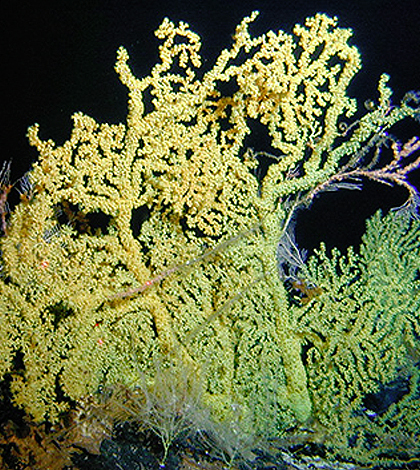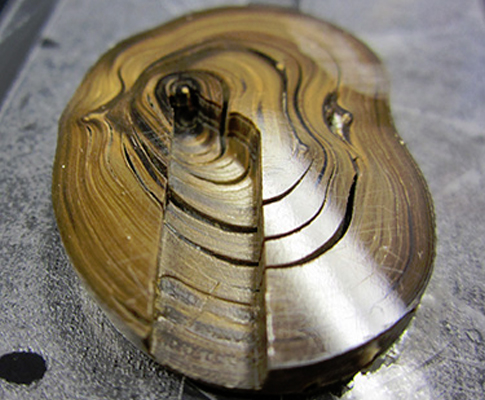Ancient Past Of Corals Reveals Climatic Events

Hawaiian gold coral is a long-lived, deep-sea coral found in the North Pacific Ocean. (Credit: University of California, Santa Cruz)
As many scientific efforts have shown, sometimes you have to look at the past to predict what might happen in the future. This ideal has held true for researchers at the University of California, Santa Cruz, who recently dug into the ancient past of corals to estimate what sort of impacts they could feel with a changing climate.
The scientists looked back over the past 1,000 years, using Hawaiian gold corals, which can live to be more than 4,000 years old. These were viewed as living records that researchers could open up to inspect their growth rings for chemical signatures that show what ocean conditions were like in past climates.
Scientists used the ancient deep-sea corals to track climate-influenced changes in phytoplankton, free-floating algae and other microorganisms that live in surface waters and shape the ocean’s chemistry, composition and health. The corals feed on dead phytoplankton and other organic matter that drifts down to the seafloor, incorporating into their skeletons chemical fingerprints of life at the surface.
The record reflects which phytoplankton communities were most prevalent at different periods. Phytoplankton may be small, but they shape the ocean in big ways, accounting for the majority of the ocean’s biomass and form the foundation of marine food webs.
The coral skeletons contain essential amino acids left largely intact from when they were in the cells of phytoplankton from hundreds of years ago. By analyzing the composition of these amino acids in different growth rings, the researchers could tell what types of phytoplankton were dominant at different times in the past.

Layers of coral skeleton laid down over the past 1,000 years can be seen in this polished section of a deep sea coral. (Credit: Matthew McCarthy / University of California, Santa Cruz)
Three major phytoplankton regimes emerged from the analysis, each coinciding with well-known climatic shifts that took place over the past 1,000 years or so. During the Medieval Climate Anomaly, a warm period from 950 to 1250, the phytoplankton community in the North Pacific was dominated by cyanobacteria that thrived when the supply of nutrients was limited due to a stable layer of warm surface water that inhibited mixing with nutrient-rich subsurface waters.
The second major phytoplankton regime occurred during the Little Ice Age, from 1400 to 1850. During this period, surface waters cooled and mixed more with subsurface waters, increasing the availability of nitrates and other nutrients. As a result, the plankton community shifted from cyanobacteria to microscopic algae.
The third period, which began with the onset of the industrial age and continues today, is dominated by nitrogen-fixing cyanobacteria, which are able to use nitrogen absorbed from the atmosphere into surface waters. This shift coincides with the increasing sea surface temperatures and changing climate driven by the rise in atmospheric carbon dioxide due to fossil fuel use and other human activities.
This last period is surprising to scientists because of the sheer pace of change they’ve seen taking place. Nothing else in the climate record really compares, they say.
Traditionally, oceanographers look to records preserved in layers of sediment on the seafloor to reconstruct past environmental shifts. But they don’t have good sediment records of the past 1,000 years in the North Pacific because the sediment accumulates so slowly and the top layer has undergone too much mixing. The Hawaiian gold corals, however, produced a surprisingly clear record.
Up next for the researchers is to team up with the Monterey Bay Aquarium Research Institute to launch remotely operated underwater vehicles to collect bamboo coral, another long-lived deep-sea species, in Monterey Bay’s deep underwater canyon. The researchers plan to apply the same techniques they used with Hawaiian gold corals to understand how El Niño cycles have influenced California’s coastal systems. Ultimately, they want to better predict how a changing climate will shape the region’s multimillion-dollar fisheries.
Full results of the work are published in the journal Science. It was funded by the National Science Foundation, the National Geographic Society and the National Oceanic and Atmospheric Administration.
Top image: Hawaiian gold coral is a long-lived, deep-sea coral found in the North Pacific Ocean. (Credit: University of California, Santa Cruz)




0 comments